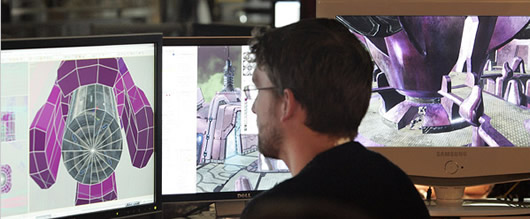Video games have become an incredibly popular form of entertainment. As technology advances, the possibilities for creating immersive, engaging video games increase. Designing a successful video game requires thoughtful planning and execution, as well as a strong understanding of the elements that make a game enjoyable.
Designing a video game is a complicated and creative process. To design a video game involves the coordination of many different elements including the story, characters, levels, graphics, music, and gameplay mechanics. This process often begins with a concept, which is then fleshed out with a detailed story, characters, and a game world. Once that is complete, the game designer then creates levels and designs the game’s mechanics. The designers add graphics, sound, and music to create a unique and immersive experience for players. The game designer is responsible for creating an enjoyable and challenging experience that will keep players coming back for more.
In this article, we will discuss the steps required to design a video game and how to create an engaging gaming experience.
Identifying the Goals of your Game
The first step in designing a video game is to identify the goals you want to achieve. What do you want the player to do? What kind of experience do you want them to have? What emotions do you want them to feel? Answering these questions will help you determine the type of game you want to create and the mechanics and features you need to include. This will also help you create the story and world of your game.
Developing a Story and World
Once you have identified the goals of your game, it is time to create the story and world. The story should be engaging and provide a purpose for the player. The world should be dynamic and immersive. Think about how the characters, enemies, and environment interact and how the player can interact with them.
Creating Characters and Enemies
Creating characters and enemies for your game is essential for providing a fun and engaging experience. Think about the different types of characters and enemies you want to include and how they will interact with the player. Consider their strengths and weaknesses and how they will challenge the player.
Creating Levels
Creating levels is a crucial part of designing a video game. Each level should be unique and provide a different challenge for the player. Think about how the environment will change and what kinds of obstacles the player will have to overcome.
Adding Features
Adding features to your game is essential for providing an engaging experience. Features such as power-ups, bonus levels, and upgrades can all make your game more entertaining. Think about what features you want to include and how they will add to the game.
Testing and Debugging
The last step in designing a video game is testing and debugging. This involves playing the game and making sure it is functioning correctly. It is important to identify any bugs or glitches that need to be fixed. Testing and debugging will ensure that your game runs smoothly and provides an enjoyable experience for the player.
Conclusion
Designing a video game is a complex process that requires thoughtful planning and execution. It is important to identify the goals of your game and create a story and world that are engaging and immersive. Creating characters and enemies, and designing levels are also essential for providing a fun gaming experience. Finally, testing and debugging your game is important for ensuring that it runs smoothly and provides an enjoyable gaming experience.
Write and Win: Participate in Creative writing Contest & International Essay Contest and win fabulous prizes.
















